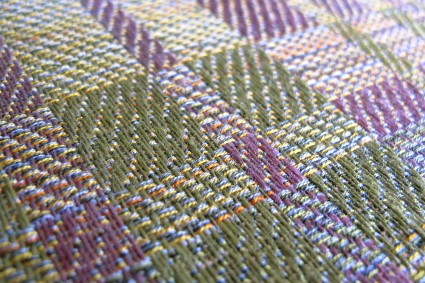"Made in [your country]" is an ongoing attractive topic in the contemporary sustainable fashion discussion. In many cases, one that borders - or is even right in the middle of - some rather right-wing nationalist sentiments. Europe as a whole does not need that - there is enough quality design and craftsmanship to be proud of without getting into shallow waters.
For Araisara, one of the biggest influences in her career as a fashion designer, in her life, comes from a women she tenderly calles 'Granny.' Granny is the inspiration behind Araisara's SS2010 'Hibiki' (echo) collection, which features stunning Sumi-Nagashi dyed fabrics.
Contrary to common opinion, ‘Australian-made’ does not always mean ethically made. In some cases salaries as low as AUS$ 4 are paid. Ethical Clothing Australia is campaigning to change their domestic fashion industry from within.
The word Beshtar means 'More' in Dari. The idea behind the brand and its designs is to do more for the people of Afghanistan. The inspiration for Beshtar comes from the resilience of a people living in a country that has been at war for more than 30 years.
Resting the case for innovation.
“Globalization presumes sustained economic growth. Otherwise, the process loses its economic benefits and political support.” (P. Samuelson). There is an evident illogic, impossibility, of the traditional 'economic growth' lemma.
Book Review: In Second Skin India Flint analysis the sustainable fashion challenge from the practicalities of a consumer. She makes it clear that our choices have a direct impact. Sadly, many of the practical examples she provides will push consumers away, rather than towards, improving their track record.
Algha Works are Britain’s last metal spectacle frame manufacturer, operating from Fish Island - close to the 2012 Olympics' site - for the past century. A portrait.
“The raison d'être of Lilou is my desire to connect people with 'their' colour.
I wanted to take the opportunity and expose people to their colour, the ones that make them feel relaxed, energized, happy, motivated..." says Ingrid Vercruyssen, the textile designer behind Lilou.
Recently, my colleague Ilaria Pasquinelli and I had the opportunity to participate in a, generally speaking, consumer facing product showcase and trade show.
For the purpose of this research, we built an interactive task which required the visitors to cut off one of their garment labels (i.e. the washing instructions), and then pin it to a map attached to a cork board according to 2 dimensions:
– ‘Made in‘: Where the garment was manufactured.
– ‘Made from‘: What the primary material the garment was made of.
As a consumer, we have a basic understanding of “Ethical”. We know that buying such a product is supposed to alleviate some of our guilt, by doing a little bit of good, but what does it actually mean?
The story of London Cloth is a rather engaging one. It all boils down to a rather single minded fascination for looms, mechanical ones specifically. 2 years on, the hobby has become a proper weaving shed with both mechanical and power looms, and clients such as Ben Sherman.
J&R Designs in Homerton is a small factory in London's East End, the only remaining of its kind, run by the Persaud family, and which specialises in hand crafted quality leather handbags manufacturing. A portrait.
Bryan Whitehead is one of the few remaining textile craftsmen in Japan who not only rears his own silk, but masters the whole textile process. Just as he as learned from seasoned crafts people, he now hands his knowledge on to his students. A plea to best of craftsmen and women cherish their expertise by teaching.
'Make it British', or the equivalent: French, Italian, German, Spanish ..., is often talked of as the ultimate panacea to address the lack of sustainability in the fashion industry. A few reasons why it all is slightly more complicated than it sounds.
Made in Neukölln: A social enterprise project that aims at introducing Berlin high school students to the different textile trades of the apparel, while pitching for social integration and sustainable supply chains.
This article has originally been published online by ‘Japan for Sustainability’ (JFS) on May 30, 2005. It is the 1st...
Starting in 1866, a shoe factor by the name of William Green came regularly from Northamptonshire up to the City of London to get orders and then take them back to Rushden where, in 1874, he opened his first factory as William Green & Son, founding the company we know today as Grenson.
With the fashion city Milan winning the honour to be the city for the 2015 World Exhibition, the Città de la Moda was part of the Expo plans. But - there will be some changes ...
“Innovatively combining new British and sustainable fabrics with reclaimed textiles” – this is Goodone’s raison d’etre in their own words. Their most recent initiative: A proper upcycling factory that can cope with both, pre- and post-consumer waste, and is the first ‘streamlined’ upcycling facility equipped and ready to work with designers on something more than one-offs.
The factory of James Ince & Sons, the oldest established umbrella makers in the country. Currently owned by the 7th generation, it has not only been around since the invention of the umbrella, but is responsible for the umbrella designs for Marry Poppins as well as Hagrid.



